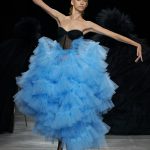Just as a seamstress skillfully combines fabrics and colours to craft a bespoke garment, choosing the right career involves a skilful blending of our passions and skills. In a world full of job possibilities, it can sometimes be a challenge to figure out where you fit in professionally, but perhaps you belong in the fashion industry.
In this series of articles on Working in Fashion, FashionUnited explores various career options. After looking at Visual Merchandisers, it is now time to introduce fashion retail buyers, who play a crucial role in the selection and sourcing of products for shops.
Immerse yourself in this profession where your knowledge of trends and your vision come together to shape the shop’s offer, leaving customers satisfied while successfully conveying the essence of the brand in a unique way.
What is a fashion retail buyer like?
The role of a buying manager is a mix of a ‘trend detective’, market analyst and an expert negotiator. Their goal is to curate a collection that not only reflects the latest fashion trends, but also satisfies the desires of their target or ideal customer, thus making the shop successful and consolidating its position in the competitive fashion market.
To achieve this mission, buyers put together their collections by drawing from a variety of sources. They work in direct collaboration with brands and designers, explore trade shows and fashion events, establish partnerships with wholesalers and distributors, visit showrooms, research online and leverage their professional network, all with the purpose of building a selection that captures the latest trends and ensures differentiation in the dynamic world of fashion.
The fashion industry is an extensive chain that spans from the raw material to the customer purchasing a garment. This process involves manufacturing, distribution, selection by a buyer and presentation in the shop by the brand’s visual merchandiser.
Do you identify yourself as…
…an expert in the fashion industry? This involves understanding the evolution of styles, consumer preferences and the factors that influence fashion.
Do you identify yourself as…
…an expert in the fashion industry? This involves understanding the evolution of styles, consumer preferences and the factors that influence fashion.
…someone with cutting-edge style and vision? Able to anticipate market preferences and translate them into innovative and attractive selections.
…gifted with analytical skills? Evaluating the performance of your selections is key. You use data and information gathered to adjust and improve your decisions, ensuring an attractive inventory in line with consumer demand.
…commercially empathetic? You know your customer and have the ability to tailor your product selections to meet their needs and preferences.
…skilled in negotiation when dealing with suppliers in terms of price, delivery times and conditions, which is essential to obtain the best terms for your company.
…an effective communicator? You will work closely with design, marketing and operations teams, so efficient communication ensures a coherent and comprehensive product strategy.
If you meet these characteristics, the Buyer role could be perfect for you!
What does a Buyer do?
When someone starts working as a buyer, their tasks generally include:
- Identify customer preferences and anticipate trends.
- Evaluate and select supplier options.
- Discovering and acquiring new products, verifying their quality and popularity.
- Negotiate advantageous deals.
- Ensure timely deliveries and contractual compliance.
- Manage inventories and plan purchases within budget.
- Prepare reports on sales and budgets.
- Participate in trade fairs and events to follow market trends.
How much does a Visual Merchandiser earn?
According to figures from Glassdoor, a website where employees anonymously rate companies, someone working as a fashion retail buyer earns an average of 41,598 pounds per year in the UK and 60,600 dollars per year in the US. In addition, the purchasing area is one of the departments with the highest salaries, ranging from 80,000 to 140,000 euros per year for purchasing managers at the head of the team.
This opens the door to opportunities for growth and exploration in the same field, as with experience and training you can aspire to other roles focused on coordinating or managing teams.
However, what does this mean in practice? Although the information on the Glassdoor website is limited, its data suggest a range of 39,000 to 96,000 pounds for buyers working at the well-known UK department store chain Marks&Spencer (M&S) and 25,000 to 32,000 pounds (about 31,000 dollars to 40,000 dollars) for buyers at the UK fast fashion retailer Boohoo.
What previous experience or training do I need?
Becoming a buyer in the fashion and retail industry requires both experience and specific training.
Previous experience in similar roles, such as sales, customer service, merchandising or purchasing functions, can provide one with valuable insight and background knowledge. Those with experience in inventory management and stock optimisation are also highly valued for buyer roles, as an efficient inventory control is essential.
In addition, an education in fields such as fashion, business administration or marketing can provide a solid foundation for the buyer role, although it is not always an absolute requirement. Taking specific courses and obtaining specific certifications, such as in purchasing, data analysis and negotiation, can demonstrate your commitment and skills in these critical areas.
Some examples are IED Madrid’s master programme in fashion product management or Istituto Marangoni’s fashion business and buying course.
This article was originally published on FashionUnited.ES. Translation and editing from Spanish into English by Veerle Versteeg.
Think this job is for you? Then take a look at the Visual Merchandiser vacancies published here on FashionUnited and find out how you can get started.



